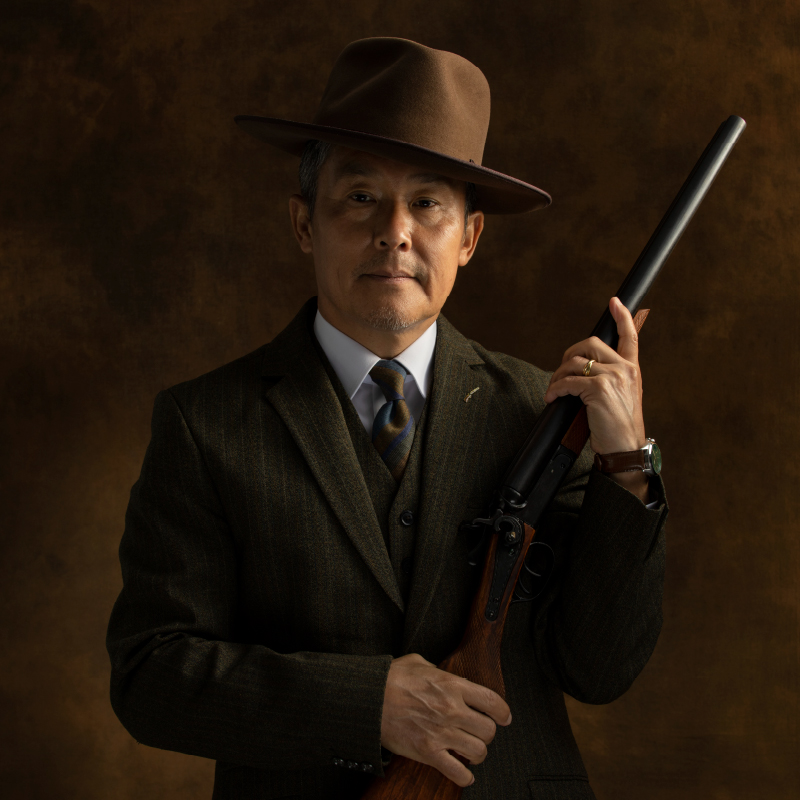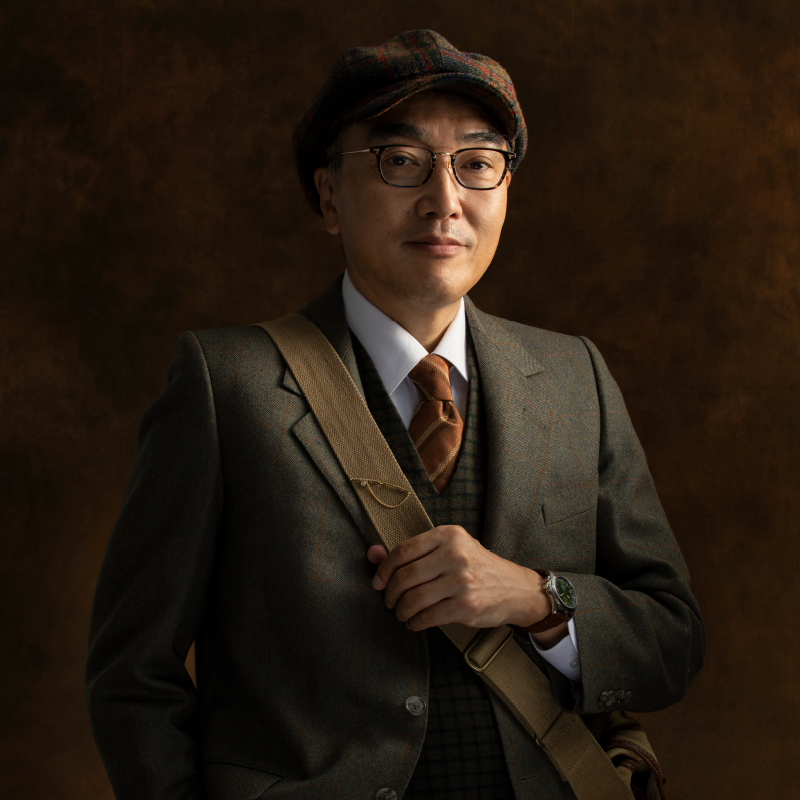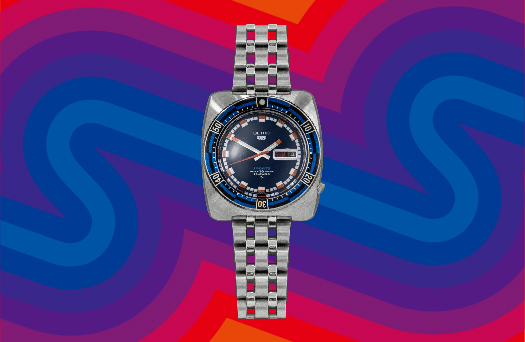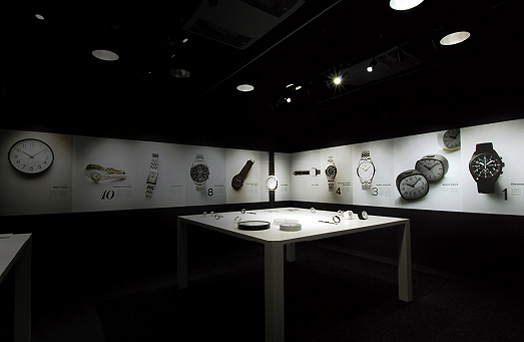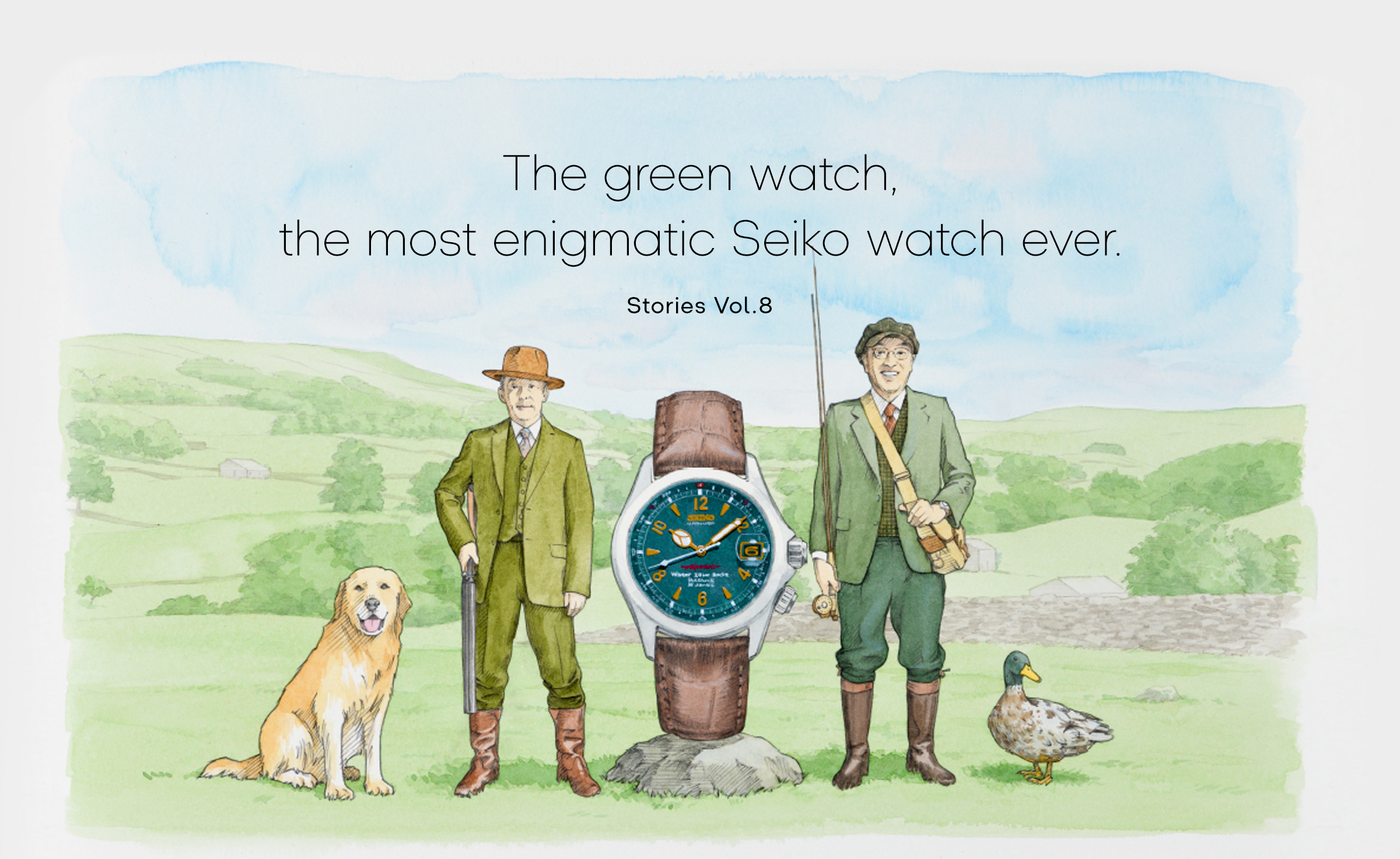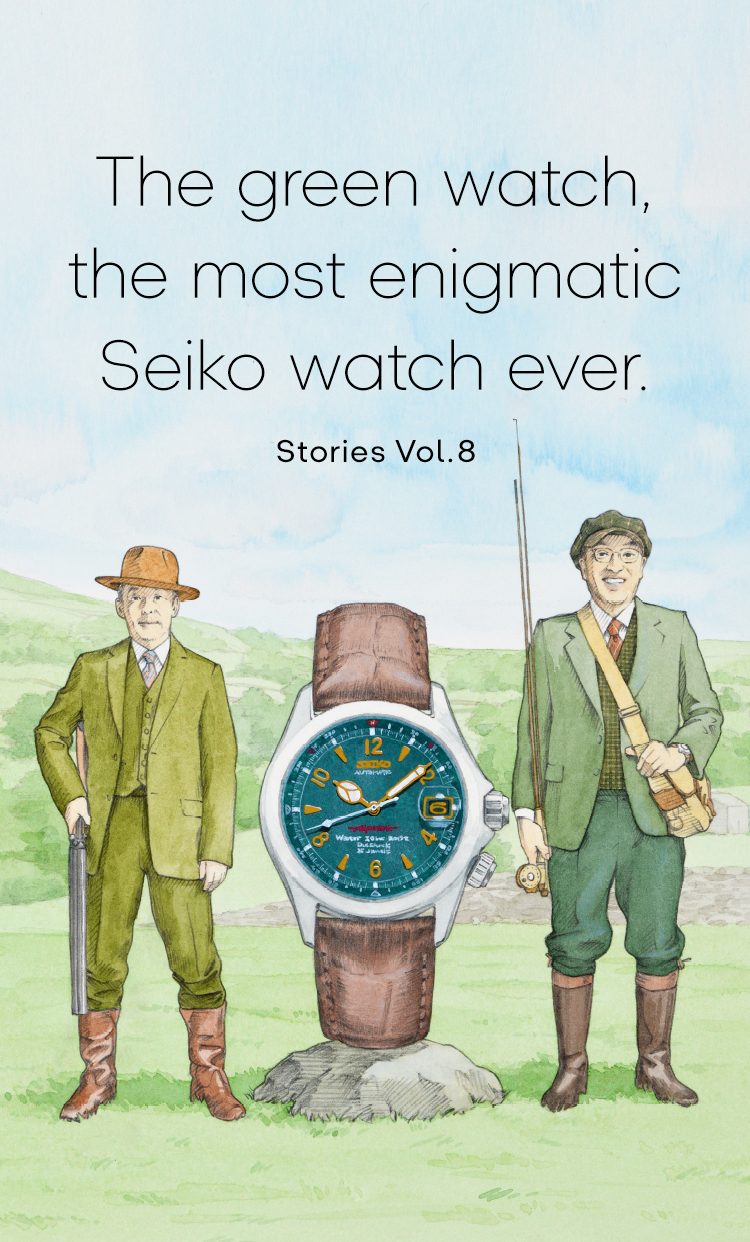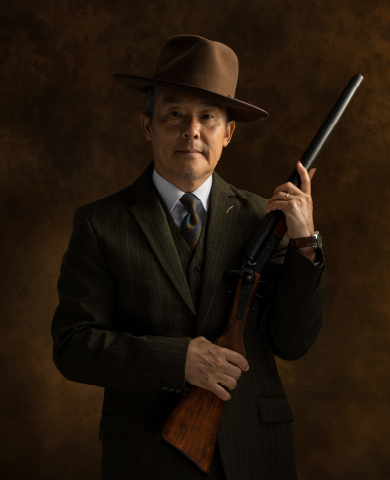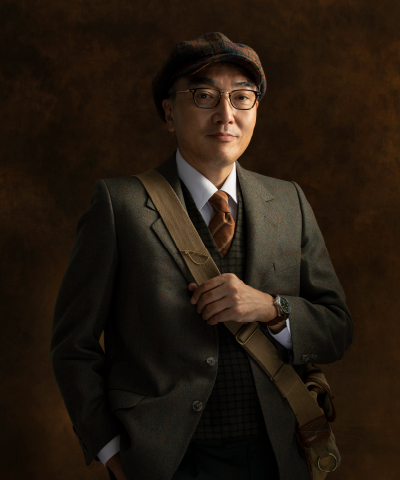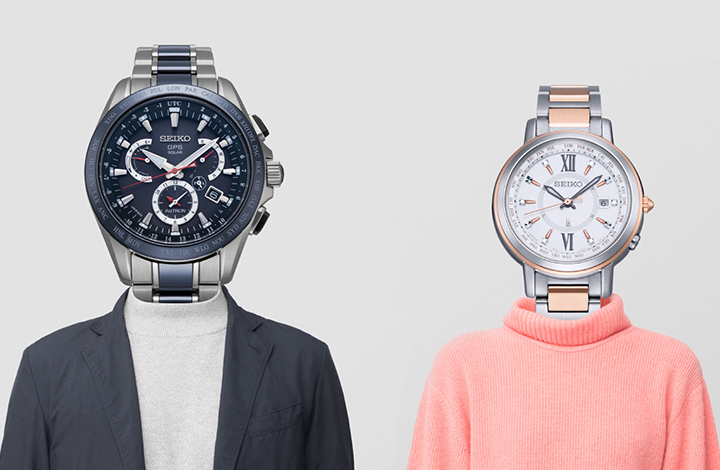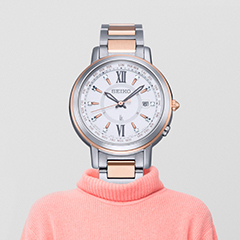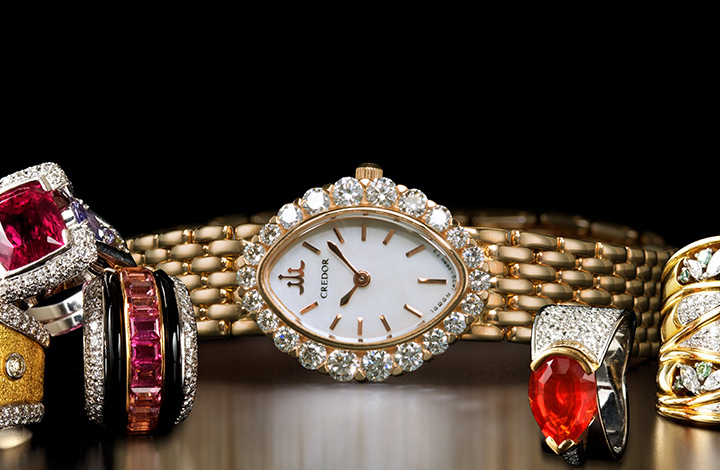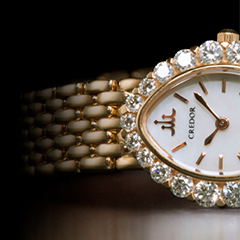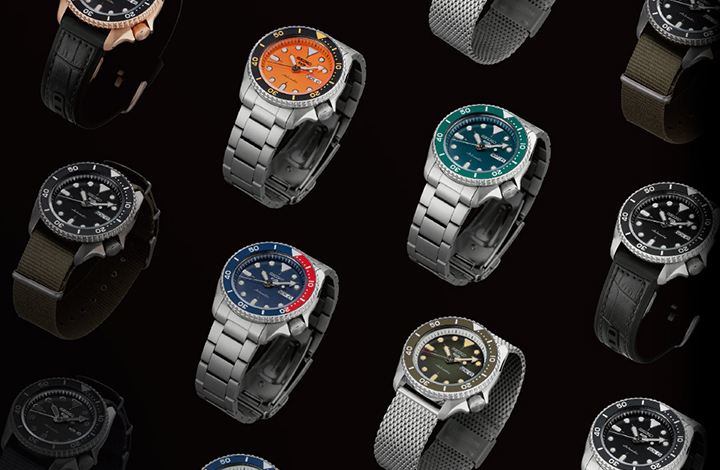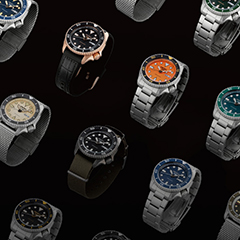The Green Alpinist, selling well and disproving old beliefs.
Kuzuya: At Seiko, we are often told that “watches with green dials won’t sell well.” So I guess the Green Alpinist is the only exception.
Sakai: Right. I worked on the design of the Green Alpinist that was sold in 1995 so that means it’s been almost a quarter century.
Kuzuya: I renewed the design in 2006, and even now it’s selling well. It’s not as if we’re advertising it.
Sakai: It is puzzling, isn’t it. When I designed the Alpinist, I made a black dial and a beige dial, too, not just a green one. I selected black and beige as colors that would go well with a stainless steel bracelet, and chose green as the best color to go with a crocodile strap.
Kuzuya: When I renewed the design, just like you, I made a black dial, beige dial, and green dial as well. But for some reason, the standard black and beige disappeared and now green is the only one remaining. I wonder if this is just because green was more appealing.
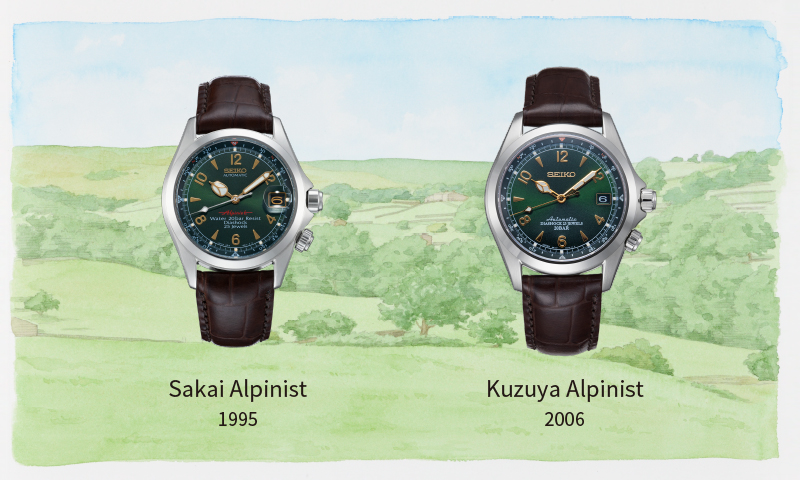
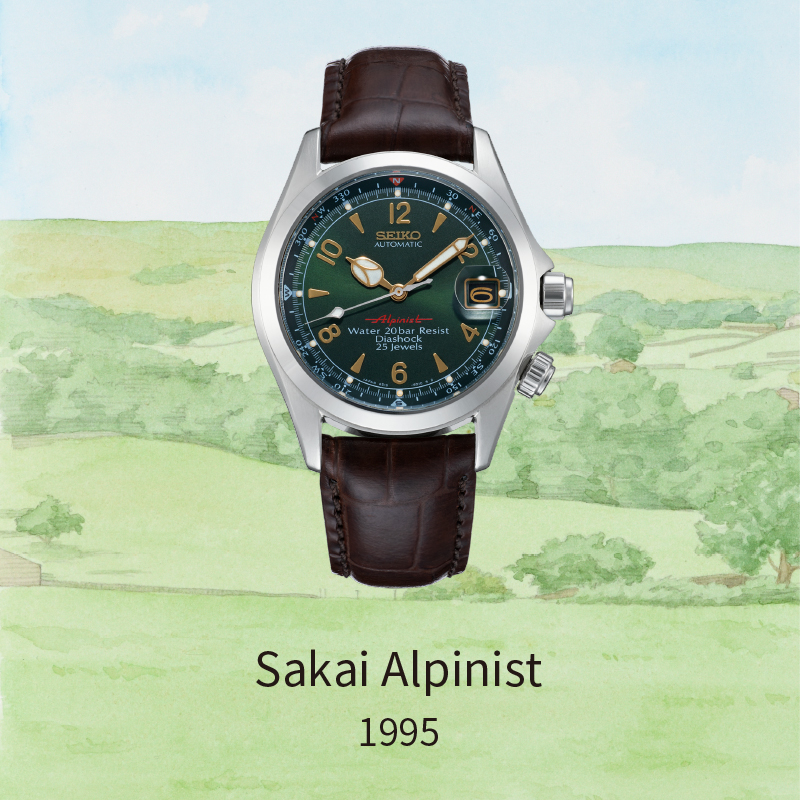
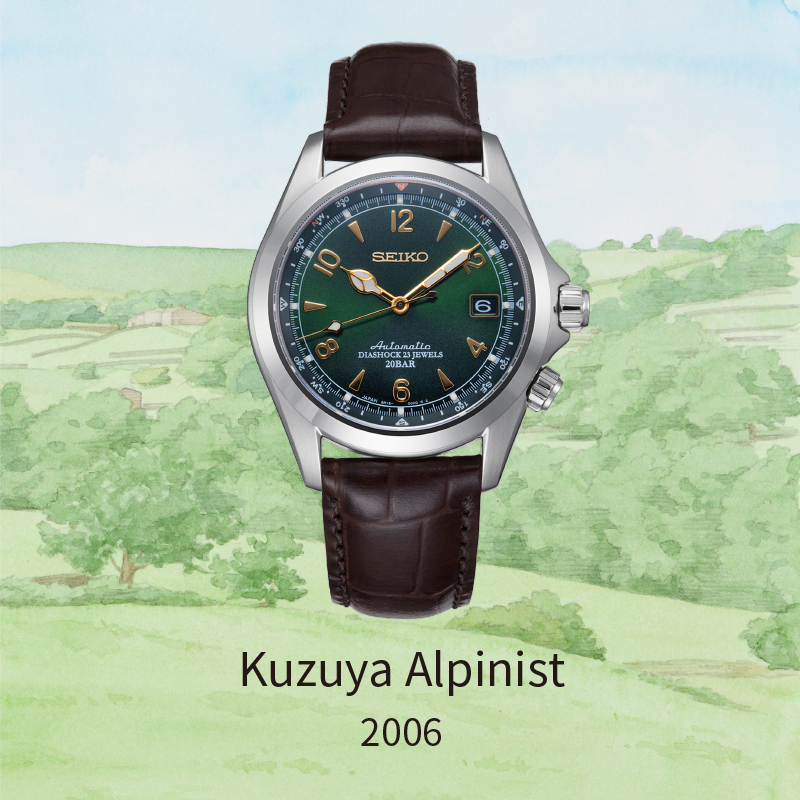
Sakai: We were very particular as to what shade of green to use. We had the option of using so-called olive green or military green, but we didn’t go with those. Actually, the car I was driving at that time was what’s called almond green, a rather dark, classic shade of green. I wanted to make the dial color like that with a real sense of depth.
Kuzuya: I was once really into fly fishing, and one British fishing gear manufacturer used this type of color in their logo. That’s why this color reminds me of fly fishing. It’s not just a simple matter of “it’s for use in the mountains so it must be green” type of thinking. This particular shade of green brings to mind British culture.
Sakai: You’re right. It has the sophisticated aura of a British gentlemen’s sport, such as sports cars, fishing, or even hunting. It is this aura that brings out its elegance.
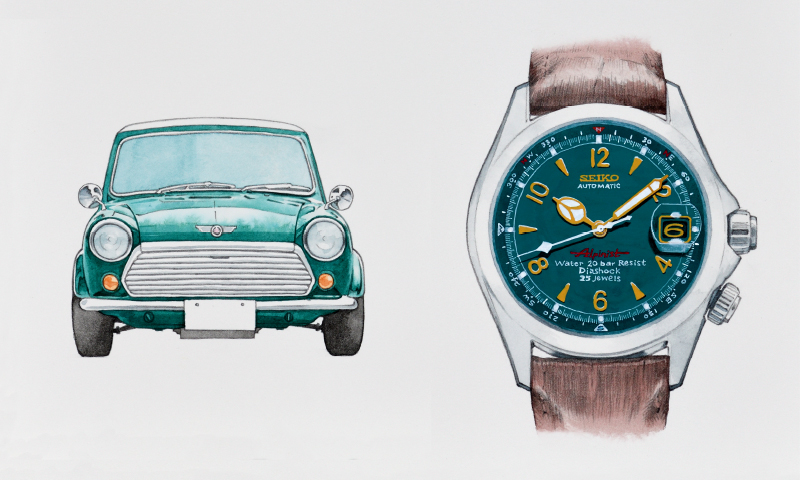

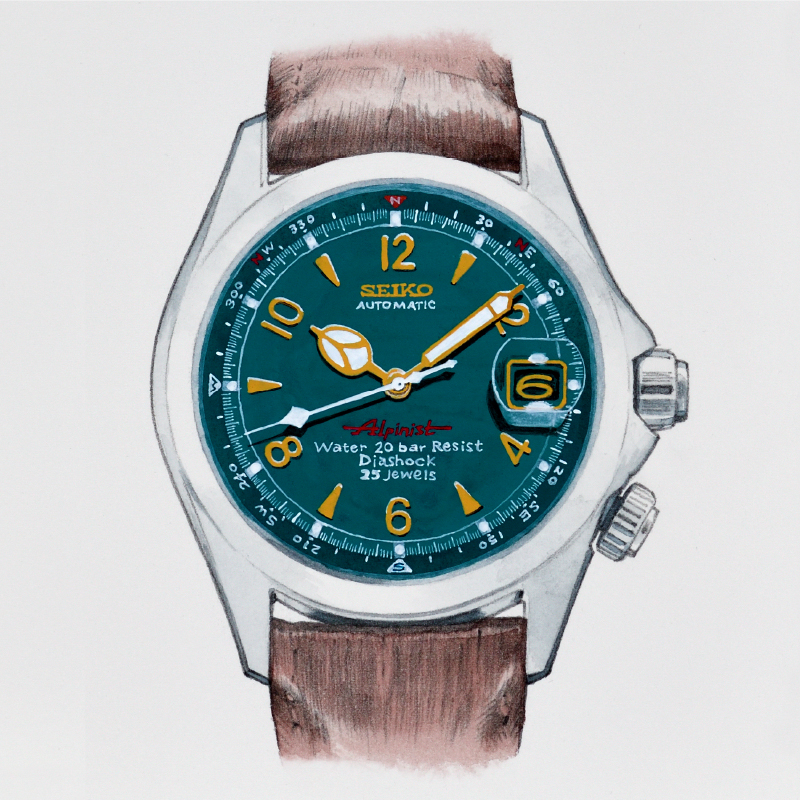
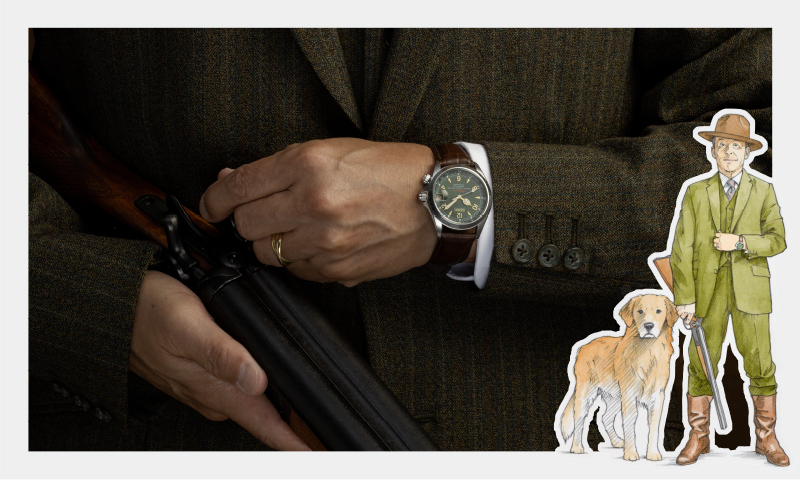
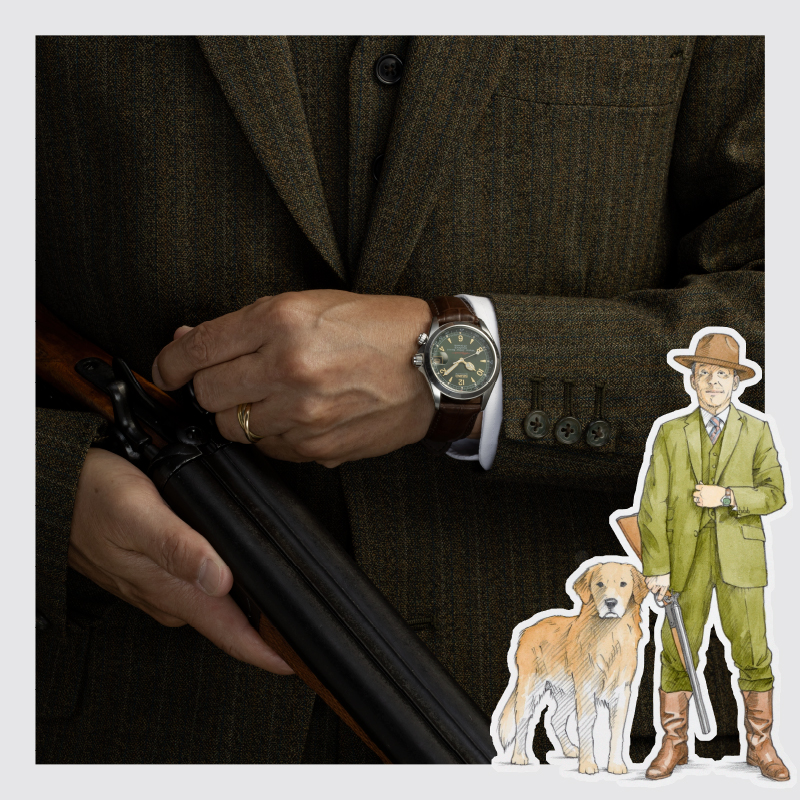
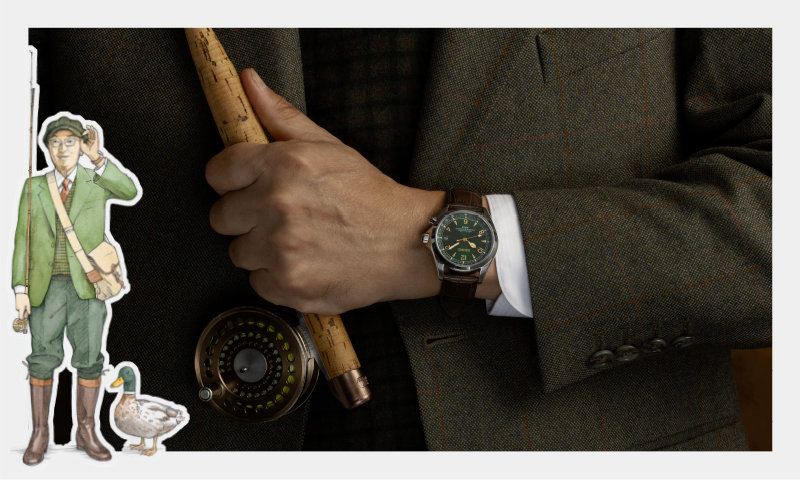
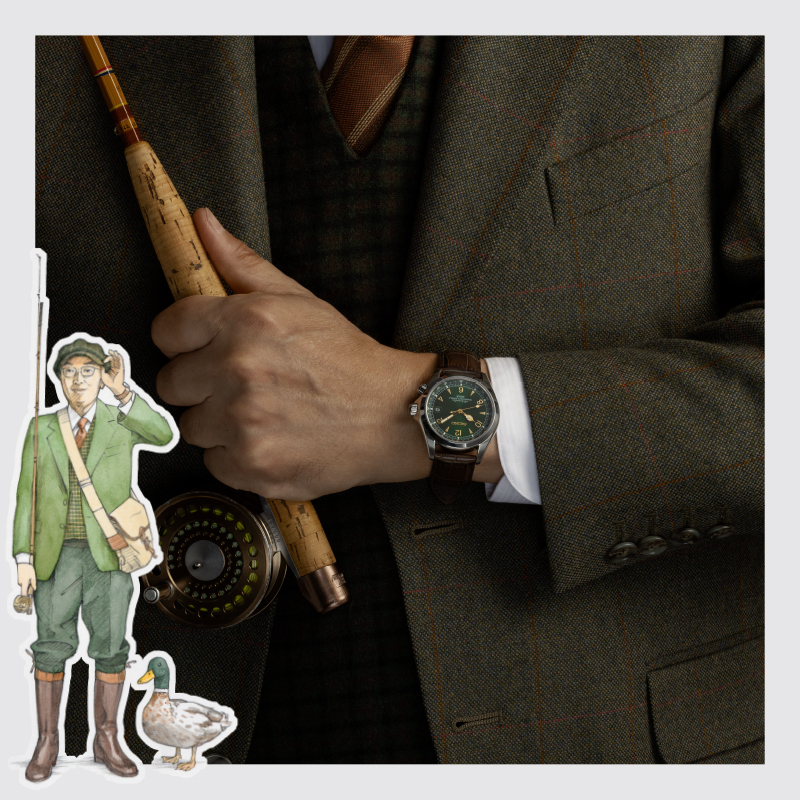
Verification. The Sakai model and the Kuzuya model—here’s where they differ.
Sakai: When we compare the two Alpinists, we can find a number of differences in the details. First of all, the movements are different. I used the 4S mechanical movement.
Kuzuya: In Japan, at that time quartz movements were at their peak and mechanical movements were rather minor, weren’t they. Meanwhile, we wanted to show the real appeal of the mechanical watches, not just the quartz watches, and then we come up with the 4S.
Sakai: Yes. One day while trying to figure out what kind of watch to make, I became interested in the Alpinist watch that came out in the 1960s. That’s right, Seiko was making a mountaineering watch called the Alpinist back in the 60s. It wasn’t green, though. This made me want to make a mountaineering watch called the Alpinist. The logo was very attractive so I decided to keep it as it was.
Kuzuya: Even though it was very popular, it was only on the market for a short time, right?
Sakai: Yes, you’re right. Then, after it was no longer being sold in stores, it turned out that this watch was being sold at a high price among watch lovers. The fact that this watch uses the 4S movement, which is difficult to mass produce, and that it was only on the market for a short period, have made it scarce and driven up the value.
Kuzuya: The movement I used during my time was the 6R. This was also mechanical but it was larger than the 4S. Trends in watch sizes changed, too, so the overall watch size became one size larger. Taking this into account I altered the design balance of the hour and second hands. With the dial now being larger, I felt that the overall “elegance” that made this watch so distinctive somewhat diminished and the balance had been lost. So at that point, I changed the design of the hour and second hands and tried to retain the former elegance.
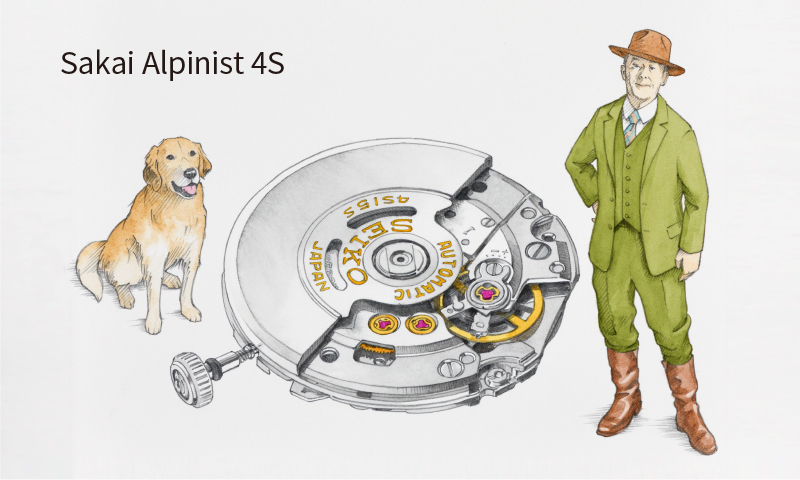
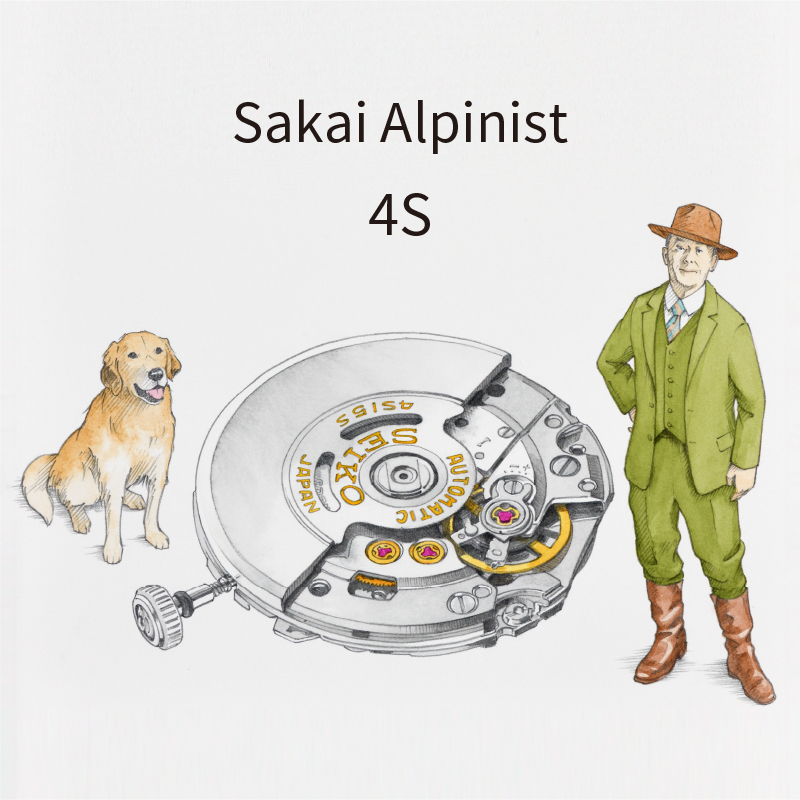
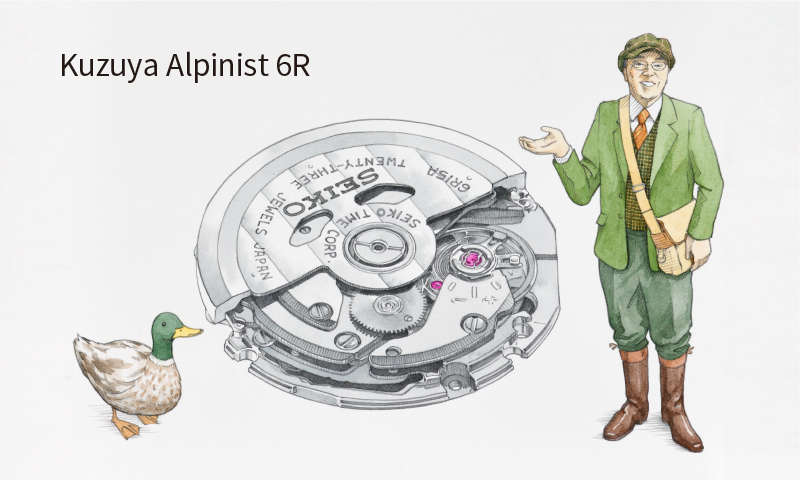
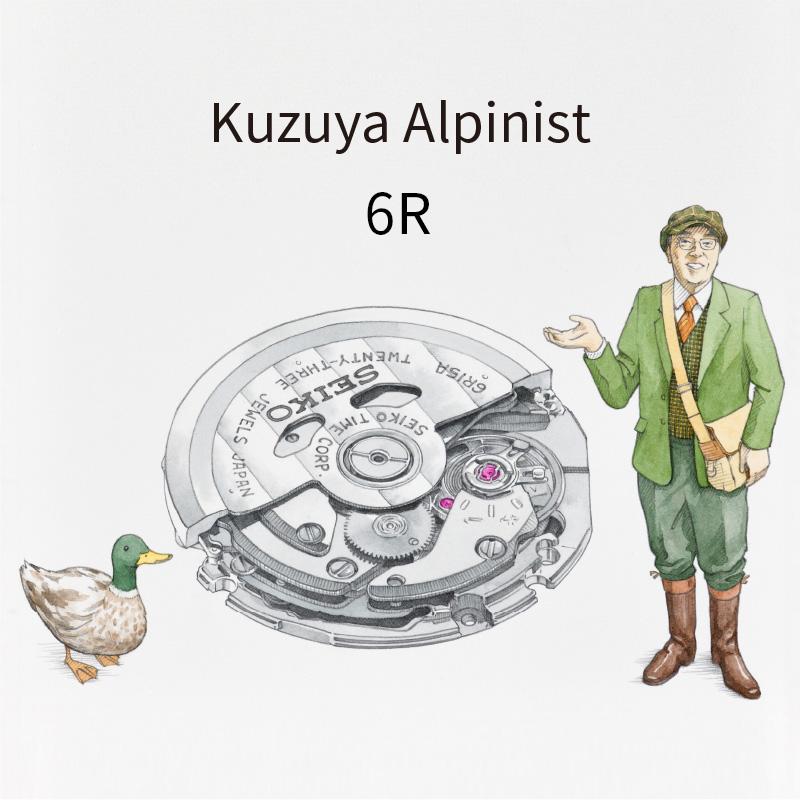
Sakai: As to other differences, during my time the glass used in the watch body was inorganic glass.
Kuzuya: But, when this watch underwent the design renewal, I changed this to sapphire glass to make it more durable. Because the calendar was enlarged when the movement was changed, I got rid of the lens for magnifying the numbers, and the Alpinist logo was removed from the dial as well.
Sakai: The shape of the end piece for attaching the strap is also different, isn’t it. At that time, in order to provide the watch with a certain degree of bulkiness, I designed it to give it a stronger sense of depth. So, do you mean that for the 6R model, because the watch had already become slightly bulky, it was not necessary to design it to appear thicker?
Kuzuya: Yes, that’s right. The Arabic numerals on the dial, if you look closely, are slightly different. This is because at the time I was using your Alpinist as a sample while making an Arabic numeral typeface that looked as close to yours as possible.
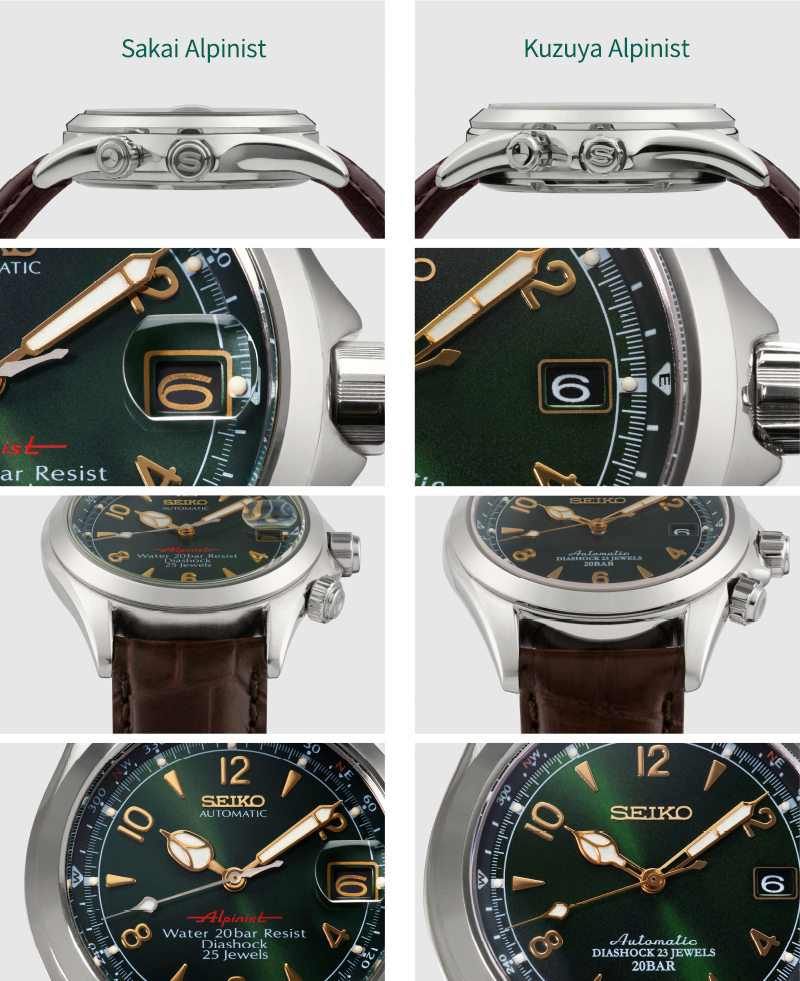
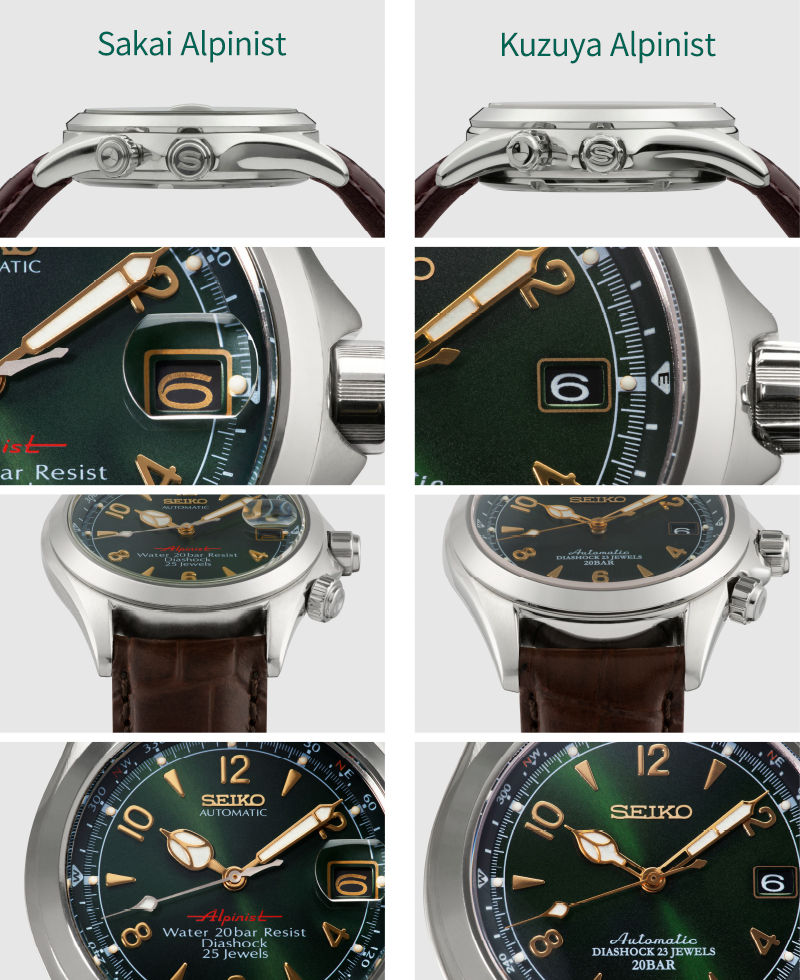
Viewpoints. Why is the Green Alpinist selling so well?
Sakai: One reason for the Alpinist’s popularity is its performance. For this price you get 20 bar water resistance and it’s automatic. It’s a watch with outstanding cost performance. And, as you might expect, it’s the design that makes the real difference. It has both “elegance” and “a sense of accuracy.” The brown strap, the green dial, and the gold index. I think it’s because the balance of these three elements is so exceptional that it has sold so well.
Kuzuya: I think the reason why the green dial was retained is that, as you can well imagine, this is a watch preferred by nature lovers. They want to feel proximity to nature even though they don’t always use the watch outdoors. This is a watch that makes that happen. Yet, even when you’re wearing a suit, it’s designed to look smart and fit in.
Sakai: The green color is distinctive and has a warmth all its own. It doesn’t need a battery so it just keeps on working. It’s a watch that gives you a feeling of perpetuity. I’m sure Alpinist owners would agree.
Kuzuya: Yes, it is a mechanical watch and that is the unique feature of Alpinist. If you’re interested in accuracy, a quartz watch is better. Mechanical watches where you have to set the time and wind up the mainspring are thought to be just too much trouble to use. But this actually coincides quite well with the “it takes a bit of effort but it’s lots of fun” thinking of those who are outdoor orientated. It’s like they are confronting this mechanical watch just like they are confronting nature.
Sakai: In any case, the fact that it’s been popular for so long is a huge privilege for us as designers.
Kuzuya: There are many opinions within the company regarding whether or not this watch should be continued, but whenever we consider discontinuing it, our customer demand goes up even more. This has happened any number of times up to now. This Green Alpinist really is quite an enigma.
